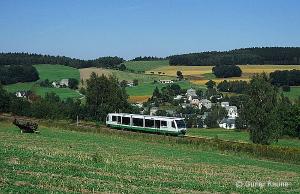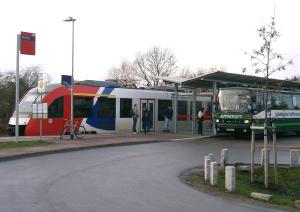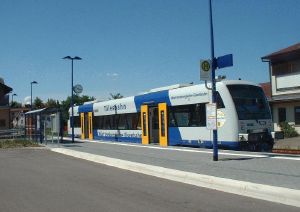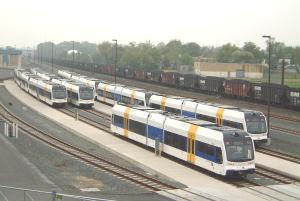Short distance trains are important for the long run
Rail transit in the Rogue Valley
The distance from Eugene and Portland to Sacramento and the Bay Area is ideal for overnight trains, but rather long for day trains. The Rogue Valley is located almost in the middle, and has more than 100 000 inhabitants. Making full use of the ridership potential improves the chances, to operate long distance traffic successfully.
Until the railroad was built, only a few pioneers had arrived in the Rogue Valley. Later settlement was typically created around the depot. Due to this history, the valley is well suited to small-scale rail transit. Such system could achieve an average speed of more than 40 mph despite short stop distance. Such numbers are out of reach for bus transit, which does not have the advantage of both fast and direct town center to town center connection.
Outside of big cities, 5% of transit bus passengers might have access to a car. If a rail-based transit solution is able to provide lots of direct links, and is squeezed out for the highest average speed possible, this figure can be >40%.

With 15 hp/ton or more, modern DMUs bring rapid transit performance to small town areas.
Since high ridership figures can't be expected in the Rogue Valley, size and costs of railroad operation have to be adapted to a small town area. Such systems have once existed in the USA, but there are no current examples. An important difference to 1920: An electrified Interurban is no longer necessary for the task.
Rail has to provide the backbone function
Within the last 15 years, railstitution of bus traffic proved to be an important tool for winning back passengers to public transport in Europe. This policy has reactivated branch lines in lower density areas, has made them the backbone of public transport, with buses rerouted and serving as feeders. Examples for successful application are given on the next page.

Rail backbone and bus feeders should be closely integrated. Passengers save time, and delays of either mode are easily
noticed by staff.
Using rail as the backbone of a bus network has several advantages:
- Comfort. The rail solution allows to offer more room. Passengers can read or write, thanks to a steady and undisturbed ride. For the rising number of elderly passengers, level boarding is an important element of comfort.
- Speed. Average speed can be double as high in comparison to the bus, thus offering attractive journey times, less labour cost for the passenger mile, and better usage of equipment.
- Adapted infrastructure. Traffic planners will choose infrastructure upgrade options with the goal, to achieve efficient equipment usage. Example: A 24 minutes run allows to operate a one-hour memory schedule with one train.

Level access to the train does not only speed up boarding: It removes punctuality risks, allowing fast turnaround at the end
of the line.
Common perception in Europe is, that political majorities for rail transit projects are almost impossible to win in the USA. Reason for this prejudice is lack of information: At the cost figure of many passenger rail projects in the USA, it would be impossible to win majorities in Europe. Nonetheless, these have passed a parliament or even a ballot!

